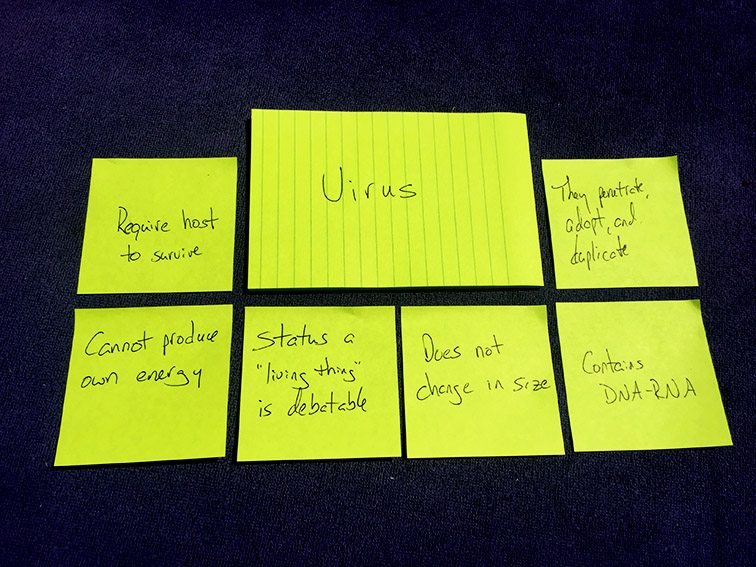
How To Use Post-it® Super Sticky Notes To Promote Critical Thinking
by TeachThought Staff
How can Post-it® Super Sticky Notes be used to promote critical thinking in the STEM high school classroom? Quite effectively, it turns out–especially if you’re familiar with Concept Attainment as a teaching and learning strategy.
The Post-it® Brand recently conducted a Back-to-School STEM Research Study which found that parents with middle and high school-aged students rank math and science as the subjects that will prepare their students the most for the job market – and yet, they are the subjects their students struggle with the most. This suggests a new approach to teaching in the STEM classroom–maybe one focused on engaging critical thinking and compelling anchoring concepts (as opposed to the classic approach of distribution of facts and information).
Whether you’re introducing a key idea, revisiting a concept, or clarifying misconceptions students have about complex ideas, Concept Attainment (link back to previous post on Concept Attainment) can be a useful tool in your teacher toolbox.
In our examples from the STEM field of Science (Biology), we’re using Post-it® Super Sticky Notes from the Post-it® Brand World of Color, Rio de Janeiro collection to illustrate what this might look like in your classroom.
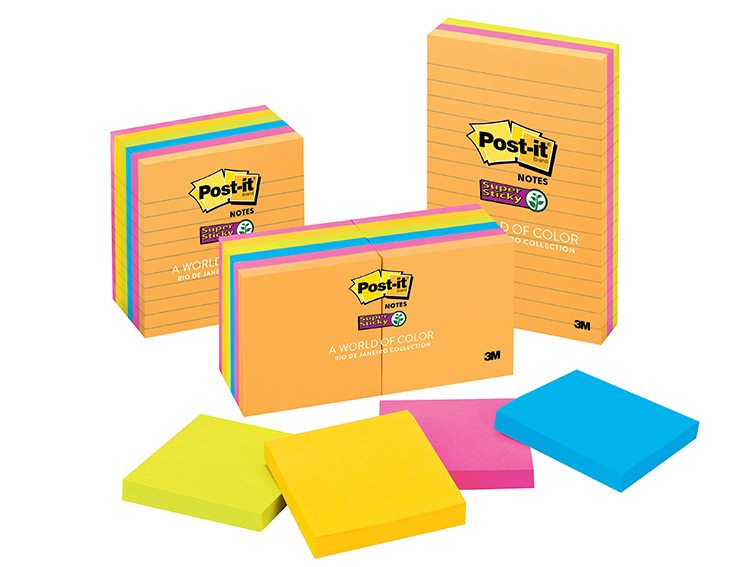
The Steps of Teaching with Concept Attainment
- Select and define a concept
- Select the attributes
- Develop examples and non-examples
- Introduce the process to the students
- Present the examples and list the attributes
- Develop a concept definition
- Give additional examples
- Discuss the process with the class
- Evaluate
This is all done ahead of time before the lesson is delivered. In short, there isn’t a lot of prep work. You choose a concept, then choose crucial Examples or Non-Examples, Characteristics, and Non-Characteristics, and create using the Post-it® Super Sticky Notes as shown below. You then reveal the information one step at a time in hopes of promoting inferencing, theory development and revision, and other hallmarks of critical thinking.
The step-by-step process we’ve provided is meant to support how the students would encounter the information in a classroom lesson. Note, though we focused on text only, you can substitute any of the below with visuals–a diagram, drawing, or symbol to represent meaning. According to the Back-to-School STEM Research Study conducted by the Post-it® Brand, 86% of parents think the best way for their students to learn STEM-subjects is through visual learning, like reading or seeing pictures, and 54% of parents think their students learn most easily by touching or participating in a hands on activity. Using different colored Post-it® Super Sticky Notes that can also get students up and out of their desks is a simple, effective way to address both possibilities.
An Example Of Concept Attainment In The Science Classroom
Step 1
The first step is to choose a concept from your curriculum map or content area–ideally this would be a critical idea or term for the students to understand. This concept should be written on a 4in x 6in Post-it® Super Sticky Note. In this example, we chose Virus.
Explain to the class: They are trying to think like a detective to infer what concept is being implied or described. If they think they have it, they are not to shout it out, but contribute to the process by offering other Examples or Non-Examples, Characteristics or Non-Characteristics in order to form and revise theories, narrowing their thinking until they “get it.”
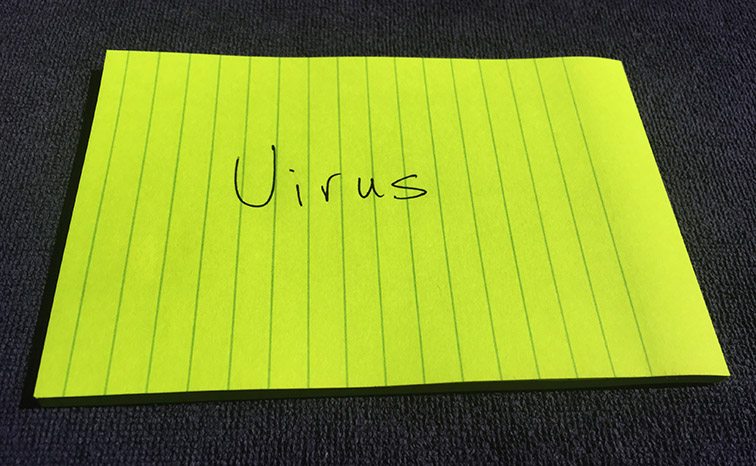
Step 2
After choosing the concept, students need to identify those attributes that most accurately and compellingly characterize that idea. Recall, the point of the activity is to introduce the true nature of the concept, rather than to simply define it. We used the same color Post-it® Super Sticky Notes in 3in x 3in size to represent the Characteristics.
You would then place these Super Sticky Notes in groups at the front of the class in the center, where students can visualize them as clues. (Depending on your classroom arrangement, you may need to use the larger Post-it® Super Sticky Notes.)
The students wouldn’t see the 4in x 6in Post-it® Super Sticky Note with the concept, “Virus”, written on it, but rather only the smaller 3in x 3in Post-it® Super Sticky Notes around it.

Step 3
Next, you’ll need to identify both Examples and Non-Examples. From the Post-it® Brand World of Color Rio de Janeiro collection, we chose blue Post-it® Super Sticky Notes for Examples and pink Post-it® Super Sticky Notes for Non-Examples. You would place these in another area marked Examples and Non-Examples so that students understand the nature of the clues.
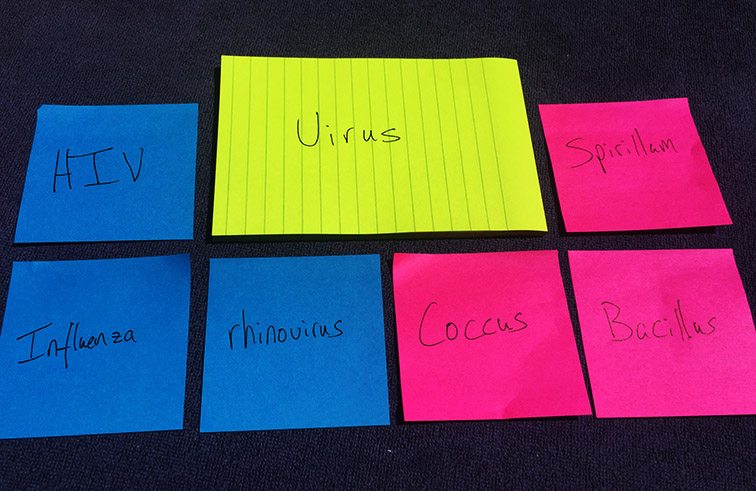
Step 4
Next, you reveal or identify 2-3 more characteristics or examples written on Post-it® Super Sticky Notes of the concept one at a time, and then ask students to place them in the correct categories–either Examples or Non-Examples, Characteristics or Non-Characteristics.
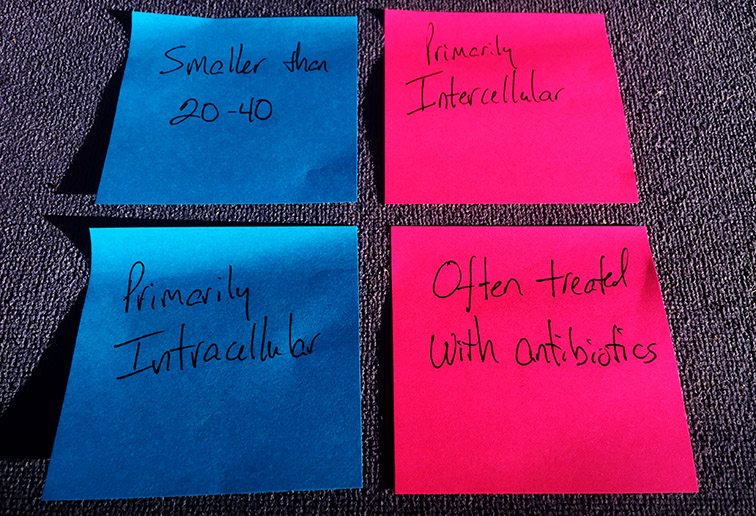
Step 5
At this point, more students should have a sense of what the concept is (but still can’t shout it out). Instruct students that think they “get it” to begin calling out more Examples or Non-Examples, Characteristics or Non-Characteristics on their own. This has the benefit of helping to differentiate the learning across the students that “get it” and the students that are still trying to figure it out, as some students can deepen their learning, while the others use their peer’s ideas to build upon.
How do you promote STEM critical thinking in the classroom or at home?
For more information on how to help students excel in STEM education visit Post-it.com. You can also connect with Post-it® Brand on Twitter, Facebook, Pinterest and Instagram.